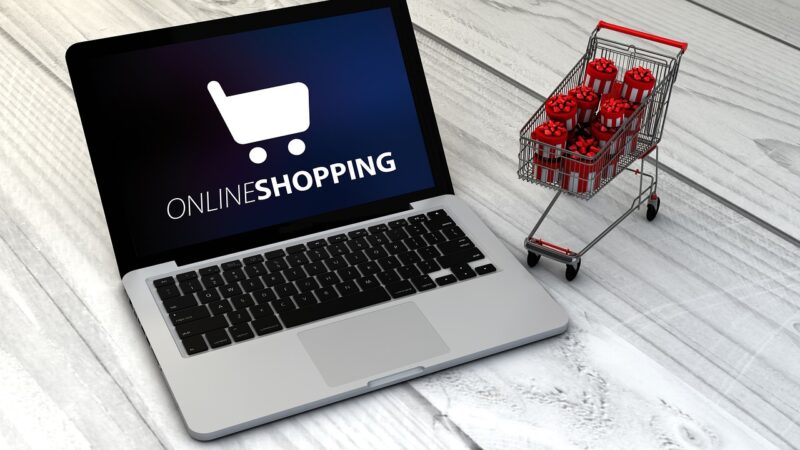E-Commerce Explosion: The Future of Online Shopping and Consumer Behavior
November 19, 2024

In recent years, e-commerce has undergone a seismic shift, rapidly evolving into the predominant method for consumers to shop. The convenience of online purchasing, paired with technological advancements, has transformed consumer behavior and expectations. As we look toward the future, it is evident that the e-commerce explosion is not merely a phase; it is a fundamental change in how we view shopping and consumer engagement.
1. The Rise of E-Commerce: A Brief Overview
The journey of e-commerce began in the early 1990s, but it wasn’t until the advent of smartphones and robust internet connectivity that online shopping became a household norm. With more consumers opting for the convenience of shopping from their phones or computers, the landscape has changed significantly. Statistics show that by 2022, global e-commerce sales surpassed $5 trillion, and projections suggest this figure will continue to grow.
But what drives this relentless growth? Key factors include:
- Convenience: Online shopping allows consumers to shop 24/7 without the need to physically visit a store.
- Variety: E-commerce platforms offer a more extensive range of products than most brick-and-mortar stores can provide.
- Global Reach: Consumers can buy products from anywhere in the world, opening up markets that were once deemed inaccessible.
As we delve deeper into the future of online shopping, it becomes crucial to examine the motivations and behaviors shaping this new consumer landscape.
2. Changing Consumer Behavior in the Digital Age
The e-commerce explosion has not only changed how we shop but also how we think about shopping. Understanding these shifts is pivotal for businesses looking to thrive in the online marketplace.
**a. Increased Research and Comparison**
One of the standout features of online shopping is the ability for consumers to conduct extensive research before making a purchase. According to studies, over 75% of consumers showcase a preference for researching online before making a purchase decision. They compare prices, read reviews, and seek recommendations from their social circle or influencers before committing to a purchase.
**b. Influence of Social Media**
Social media platforms like Instagram, TikTok, and Pinterest have become trendsetters in consumer behavior, influencing purchases through targeted ads and influencer endorsements. Brands that leverage social media effectively can connect with their audiences in meaningful ways, driving traffic to their e-commerce stores.
**c. Personalization**
Consumers now expect personalization in their shopping experiences. They crave tailored recommendations based on their past purchases and browsing behaviors. E-commerce platforms are increasingly using AI to deliver personalized shopping experiences, making consumers feel valued and understood.
3. Technological Innovations Shaping E-Commerce
From AI to augmented reality, a wave of technological advancements is influencing the e-commerce industry.
**a. Artificial Intelligence (AI)**
AI is revolutionizing online shopping by enhancing personalization and improving customer service. Chatbots are becoming a common tool in e-commerce for providing immediate assistance, answering questions, and facilitating smoother shopping experiences. Brands using AI can predict consumer behaviors and offer products that match their preferences.
**b. Augmented Reality (AR)**
AR technology allows consumers to visualize products in their own space before purchasing, reducing the uncertainty associated with online shopping. Retailers in fashion, furniture, and home décor are embracing AR to enhance the consumer experience.
**c. Mobile Commerce (M-commerce)**
With the surge in smartphone usage, mobile commerce is booming. A significant segment of online shopping now takes place through mobile devices. Companies are investing in mobile-responsive designs and applications to capture this growing market of mobile shoppers, ensuring seamless experiences for consumers on the go.
4. Sustainability and Ethical Consumerism
Today’s consumers are more informed and concerned about sustainability than ever. The drive for environmentally friendly products is reshaping how brands approach their offerings. This focus on sustainability manifests in various ways:
**a. Ethical Sourcing**
Consumers are pushing brands to be transparent about their supply chains, prompting companies to adopt responsible sourcing practices and provide clear information about the origins of their products.
**b. Sustainable Packaging**
Brands are increasingly opting for eco-friendly packaging materials, addressing consumer demand for environmentally friendly options. This can influence purchasing decisions, making sustainability a significant factor in brand loyalty.
**c. Social Responsibility**
Brands that actively support social causes and demonstrate corporate responsibility are gaining favor among consumers. This trend reflects a broader movement towards ethical consumerism, where purchasing decisions are influenced by social, environmental, and ethical considerations.
5. The Future of E-Commerce: Trends to Watch
As we look ahead, several key trends are set to shape the future of e-commerce:
**a. Voice Commerce**
With the rise of smart speakers and voice assistants, voice commerce is set to become a significant player. Shoppers are increasingly using voice commands to search for products, making it essential for retailers to optimize their platforms for voice search.
**b. Subscription Models**
The subscription box model has gained immense popularity, offering convenience and exclusive products. Brands are expected to innovate and refine their offerings within this model to cater to changing consumer preferences.
**c. Social Commerce**
Social commerce is expected to expand further, blurring the lines between social media and e-commerce. Platforms like Facebook and Instagram are enhancing their shopping features, making it easier for consumers to purchase directly through social media channels.
Conclusion
The e-commerce explosion is far more than a trend; it signifies a transformative shift in how consumers approach shopping. Businesses that recognize and adapt to the evolving landscape will be better positioned to thrive in an increasingly competitive market. By leveraging technology, understanding changing consumer behaviors, and embracing ethical practices, brands can create an engaging online shopping experience that not only meets consumer expectations but exceeds them.
As we move forward, the future of e-commerce will continue to unfold, offering limitless possibilities for innovation and growth within the realm of online shopping. Get ready, as the journey of e-commerce has only just begun!






